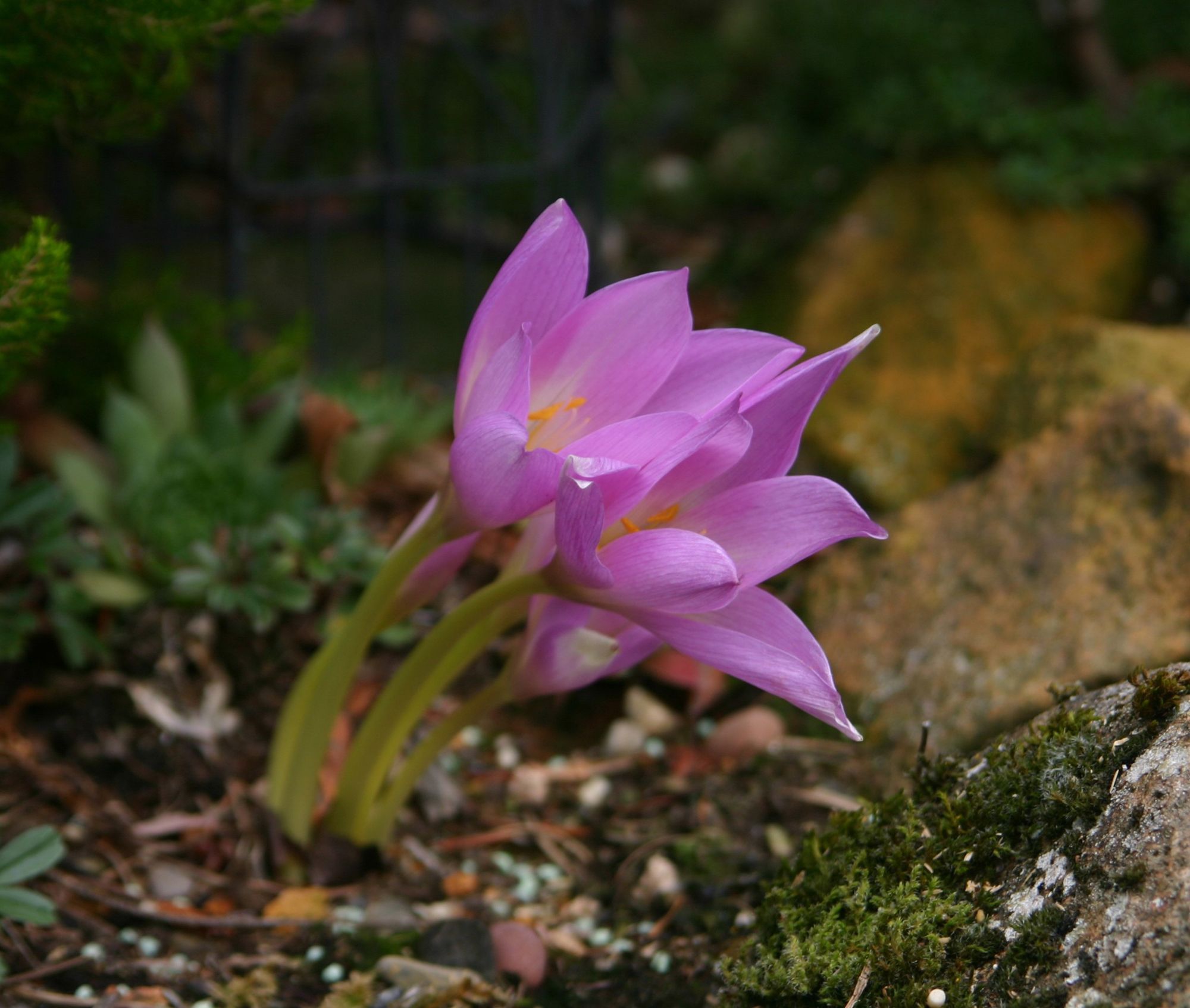Gardeners are used to the delayed gratification of planting bulbs. As we plant in the fall, we imagine the future pastel tulips and fragrant daffodils that will emerge from these spring blooming bulbs. They go into the ground now as little more than ovoid, plain brown-paper packages. It will be March, April or even May before we enjoy the fruits of our autumnal labors.
What a lovely treat it is to discover the less familiar colchicum and fall-blooming crocus, which will produce their rich colors mere weeks after planting, not months. Colchicums and autumn crocuses are similar in form, but very different in stature. Both offer fresh faces at a time when most plants have long since peaked. Neither of these groups seems to be well known or widely planted, which is a shame.
This group of bulbs is typically sold at retail nurseries with knowledgeable buyers, perhaps explaining their scarcity in home landscapes. Take a trip to your favorite nursery or garden center now, while the available selection is still fresh. Plant them promptly in well-drained soil and enjoy the show soon thereafter.
Colchicums are magical, their vase-shaped amethyst, white, or pinkish-lavender flowers emerging seemingly from nowhere in September or October. The foliage appears in spring and disappears in early summer. The glowing blooms are borne in profusion, each bulb producing handfuls. Another winning attribute of these bulbs is their deer- and vole-resistance. They can be grown in USDA Zone 5 to Zone 8 in the South, 9 in the West. Flowers range from 6 to 12 inches tall, depending on variety.
Tuck a clutch of bulbs in front of shrubs to liven up a boring green foundation planting. Plant them among groundcovers such as a creeping Sedum or Ajuga. Fall-blooming crocuses are more petite, very similar in size to their spring cousins, but usually blooming around Columbus Day. Among the more popular of these charmers is Crocus sativus, the source of culinary saffron. Saffron crocus is hardy from Zones 6 to 9. The similar but nonedible floriferous C. speciosus are suitable as far north as Zone 4.
The shipping season for colchicum, fall crocus, lycoris, and sternbergia, the fall-bloomers, is brief, so early ordering assures the best selection and prompt delivery. Fall is also the time to plant garlic as well as daffodils and tulips. Order now for best selection and your bulbs will arrive at the right time for planting in your zone.
Tools and toys
In my gardening experience, there are tools and there are also tools that are toys. These are tools that serve for me as a diversion, rather than for serious practical use. For example, I carry a magnifying glass with me around the garden. I keep it in my work vest pocket so I always know where to find it. There are many types available. I like to carry a set of small, folding or collapsible magnifiers that fit easily into any pocket.
In my own garden, I prefer to use the classic oversized magnifying glass with a handle, something like the ones that Sherlock Holmes was known to carry with him at all times. Mine also has a high-magnification lens in the upper part of the handle, in case I want to home in on a specific subject. You don’t know what you are missing until you try looking at a flower, leaf or insect through a magnifying glass. It will pique your interest to look further in.
Another favorite tool/toy is a medical stethoscope, like the one your doctor uses to hear your heart beat. This one offers a real treat to the avid gardener, especially one with children in the house or a child still alive within. Did you know that tomatoes make a sound as they take water from the vine into the fruit? They do. Now, imagine the volume increasing as you step up to a pumpkin or a watermelon. Yes, it’s like hearing the difference between a creek and a river.
A gardeners group
For any gardener who finds their hobby becoming a passion, I encourage you to join the Hardy Plant Society of Oregon, also known as HPSO. Among the many benefits of membership are seasonal speaker programs, the annual plant study weekend, the now famous HPSO spring and fall plant sales and of course the opportunity to visit the best public and private gardens in the Northwest through the HPSO “Open Garden” program. Your next step, as a member of HPSO, is to join the Clark County Interest Group, which meets every second Wednesday of the month. Visit http://www.hardyplantsociety.org.
Robb Rosser is a WSU-certified master gardener. Reach him at Write2Robb@aol.com.



